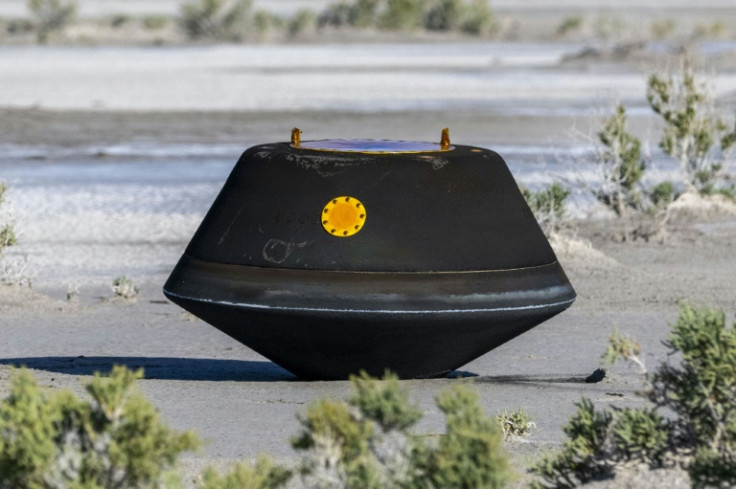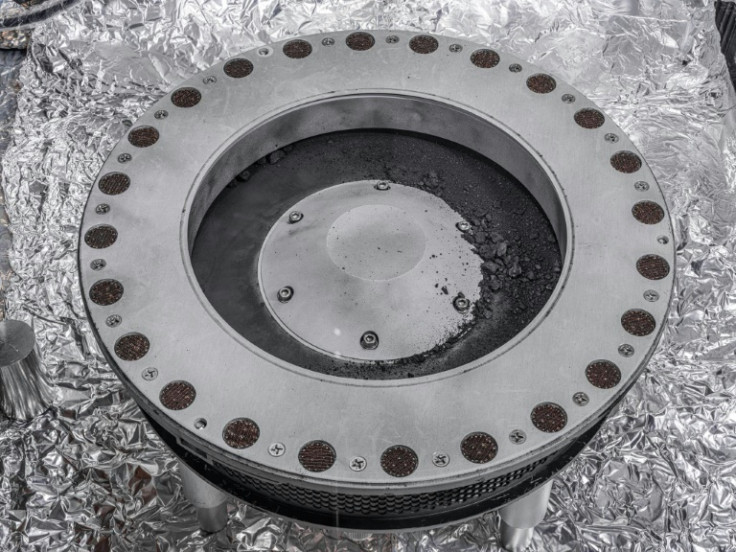
A sample collected from the 4.5-billion-year-old asteroid Bennu contains abundant water and carbon, NASA revealed on Wednesday, offering more evidence for the theory that life on Earth was seeded from outer space.
The discovery follows a seven-year-round-trip to the distant rock as part of the OSIRIS-REx mission, which dropped off its precious payload in the Utah desert last month for painstaking scientific analysis.
"This is the biggest carbon-rich asteroid sample ever returned to Earth," NASA administrator Bill Nelson said at a press event at the Johnson Space Center in Houston, where the first images of black dust and pebbles were revealed.
Carbon accounted for almost five percent of the sample's total weight, and was present in both organic and mineral form, while the water was locked inside the crystal structure of clay minerals, he said.
Scientists believe the reason Earth has oceans, lakes and rivers is because it was hit with water-carrying asteroids 4 to 4.5 billion years ago, making it a habitable planet.
All life on Earth meanwhile is based on carbon, which forms bonds with other elements to produce proteins and enzymes as well as the building blocks of genetic code, DNA and RNA.
The findings were made through a preliminary analysis involving scanning electron microscopy, X-ray computed tomography and more.
"This stuff is an astrobiologist's dream," said scientist Daniel Glavin, adding there was much more work to be done and the sample would be shared with labs around the world for further study.
OSIRIS-REx wasn't the first probe to rendezvous with an asteroid and bring back samples for study -- Japan succeeded in the feat twice, returning celestial dust in 2010 and 2020.
But the amount collected -- an estimated 250 grams (half a pound) -- dwarfs that returned by the Japanese missions, with Hayabusa2 managing only 5.4 grams.
Named after an ancient Egyptian deity, Bennu is a "primordial artifact preserved in the vacuum of space," according to NASA, making it an attractive target for study.
Its orbit, which intersects that of our planet, also made the journey easier than going to the Asteroid Belt, which lies between Mars and Jupiter.
In addition to scientific insights, better understanding of Bennu's composition could prove useful if humanity ever needs to steer it away.
While there is no risk of it hitting Earth through the mid 2100s, the chances rise to around 1 in 1,750 between then and the year 2300, NASA says.
Data gathered by the OSIRIS-REx spacecraft revealed the particles making up Bennu's exterior were so loosely packed that if a person were to step onto the surface, they might sink in, much like a pit of plastic balls in children's play areas.
Researchers have so far focused their efforts not on the main sample itself but on "bonus particles," that lay on top of the sample collecting mechanism.
An inspection of the remainder of the sample will follow later.
Back in October 2020, when the OSIRIS-REx probe shot nitrogen gas at Bennu to collect material, a flap meant to seal the sample got wedged open, allowing some of the material to flow out into another compartment.
"The very best 'problem' to have is that there is so much material, it's taking longer than we expected to collect it," said deputy OSIRIS-REx curation lead Christopher Snead, in a statement.
NASA says it will preserve at least 70 percent of the sample at Houston for future study -- a practice first started in the Apollo era with Moon rocks.
"The samples are then available for new questions, new techniques, new instrumentation far into the future," said Eileen Stansbery, division chief of astromaterials research at the Johnson Space Center.
Additional pieces will be sent for public display at the Smithsonian Institution, Space Center Houston, and the University of Arizona.








